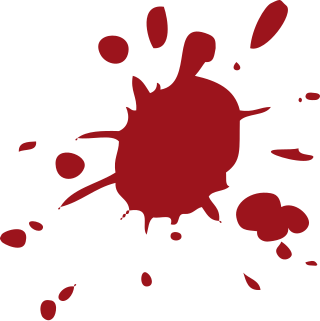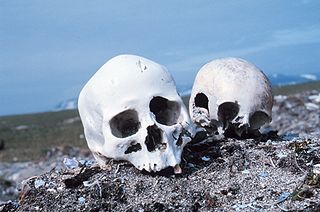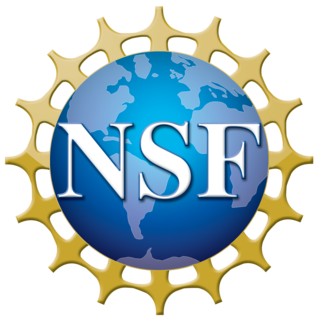
CSI: NY is an American police procedural television series that ran on CBS from September 22, 2004, to February 22, 2013, for a total of nine seasons and 197 original episodes. The show follows the investigations of a team of NYPD forensic scientists and police officers identified as "Crime Scene Investigators" as they unveil the circumstances behind mysterious and unusual deaths, as well as other crimes. The series is an indirect spin-off from the veteran series CSI: Crime Scene Investigation and a direct spin-off from CSI: Miami, during an episode in which several of the CSI: NY characters made their first appearances. It is the third series in the CSI franchise.

The Behavioral Analysis Unit (BAU) is a department of the Federal Bureau of Investigation's National Center for the Analysis of Violent Crime (NCAVC) that uses behavioral analysts to assist in criminal investigations. The mission of the NCAVC and the BAU is to provide behavioral based investigative and/or operational support by applying case experience, research, and training to complex and time-sensitive crimes, typically involving acts or threats of violence.

A crime scene is any location that may be associated with a committed crime. Crime scenes contain physical evidence that is pertinent to a criminal investigation. This evidence is collected by crime scene investigators (CSIs) and Law enforcement. The location of a crime scene can be the place where the crime took place, or can be any area that contains evidence from the crime itself. Scenes are not only limited to a location, but can be any person, place, or object associated with the criminal behaviors that occurred.
The American Academy of Forensic Sciences (AAFS) is a society for forensics professionals, founded in 1948. The society is based in Colorado Springs, Colorado, USA.

The CSI effect, also known as the CSI syndrome and the CSI infection, is any of several ways in which the exaggerated portrayal of forensic science on crime television shows such as CSI: Crime Scene Investigation influences public perception. The term was first reported in a 2004 USA Today article describing the effect being made on trial jurors by television programs featuring forensic science. It most often refers to the belief that jurors have come to demand more forensic evidence in criminal trials, thereby raising the effective standard of proof for prosecutors. While this belief is widely held among American legal professionals, some studies have suggested that crime shows are unlikely to cause such an effect, although frequent CSI viewers may place a lower value on circumstantial evidence. As technology improves and becomes more prevalent throughout society, people may also develop higher expectations for the capabilities of forensic technology.

Bloodstain Pattern Analysis (BPA) is the study and analysis of bloodstains at a known or suspected crime scene with the purpose of drawing conclusions about the nature, timing and other details of the crime. It is one of the several specialties of forensic science.
The Swedish National Forensic Centre — previously known as the National Laboratory of Forensic Science — is a Swedish government agency, organized under Department of Justice as a department of the Swedish Police Authority. It is tasked with assisting the Swedish police in investigating crimes. The agency performs laboratory analyses of samples which have been taken from various types of crime scenes. The laboratory has expertise in most science disciplines and uses technology to find and preserve trace evidence and to establish links between people, places and objects.
Crime reconstruction or crime scene reconstruction is the forensic science discipline in which one gains "explicit knowledge of the series of events that surround the commission of a crime using deductive and inductive reasoning, physical evidence, scientific methods, and their interrelationships". Gardner and Bevel explain that crime scene reconstruction "involves evaluating the context of a scene and the physical evidence found there in an effort to identify what occurred and in what order it occurred." Chisum and Turvey explain that "[h]olistic crime reconstruction is the development of actions and circumstances based on the system of evidence discovered and examined in relation to a particular crime. In this philosophy, all elements of evidence that come to light in a given case are treated as interdependent; the significance of each piece, each action, and each event falls and rises on the backs of the others."

Forensic biology is the application of biology to associate a person(s), whether suspect or victim, to a location, an item, another person. It can be utilized to further investigations for both criminal and civil cases. Two of the most important factors to be constantly considered throughout the collection, processing, and analysis of evidence, are the maintenance of chain of custody as well as contamination prevention, especially considering the nature of the majority of biological evidence. Forensic biology is incorporated into and is a significant aspect of numerous forensic disciplines, some of which include forensic anthropology, forensic entomology, forensic odontology, forensic pathology, forensic toxicology. When the phrase "forensic biology" is utilized, it is often regarded as synonymous with DNA analysis of biological evidence.

The FBI Laboratory is a division within the United States Federal Bureau of Investigation that provides forensic analysis support services to the FBI, as well as to state and local law enforcement agencies free of charge. The lab is located at Marine Corps Base Quantico in Quantico, Virginia. Opened November 24, 1932, the lab was first known as the Technical Laboratory. It became a separate division when the Bureau of Investigation (BOI) was renamed as the FBI.
The following outline is provided as an overview of and topical guide to forensic science:

CSI is a media franchise of American television programs created by Anthony E. Zuiker. The first three CSI series follow the work of forensic scientists as they unveil the circumstances behind mysterious deaths, while the fourth series, CSI: Cyber, emphasizes behavioral psychology and how it can be applied to cyber forensics.

The Nutshell Studies of Unexplained Death are a series of nineteen intricately designed dollhouse-style dioramas created by Frances Glessner Lee (1878–1962), a pioneer in forensic science. Glessner Lee used her inheritance to establish a department of legal medicine at Harvard Medical School in 1936, and donated the first of the Nutshell Studies in 1946 for use in lectures on the subject of crime scene investigation. In 1966, the department was dissolved, and the dioramas went to the Maryland Medical Examiner's Office in Baltimore, Maryland, U.S. where they are on permanent loan and still used for forensic seminars.
Forensic entomology deals with the collection of arthropodic evidence and its application, and through a series of tests and previously set of rules, general admissibility of said evidence is determined. Forensic entomology may come into play in a variety of legal cases, including crime scene investigation, abuse and neglect cases, accidents, insect infestation, and food contamination.

The National Museum of Crime and Punishment, also known as the Crime Museum, was a privately owned museum dedicated to the history of criminology and penology in the United States. It was located in the Penn Quarter neighborhood of Washington, D.C., half a block south of the Gallery Place station. The museum closed in 2015 and is now operated as Alcatraz East, a museum in Pigeon Forge, Tennessee.
The Scientific Working Group on Imaging Technology was convened by the Federal Bureau of Investigation in 1997 to provide guidance to law enforcement agencies and others in the criminal justice system regarding the best practices for photography, videography, and video and image analysis. This group was terminated in 2015.

Alcatraz East is a crime museum in Pigeon Forge, Tennessee. Opened in 2016, it was formerly operated as the National Museum of Crime & Punishment in Washington, DC. The museum gives a behind-the-scenes look at crime history in America. It was created and built by attorney John Morgan, and his Chief Operating Officer, Janine Vaccarello.















